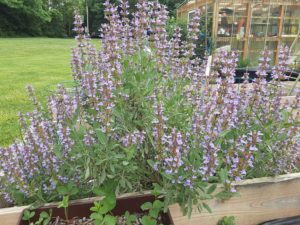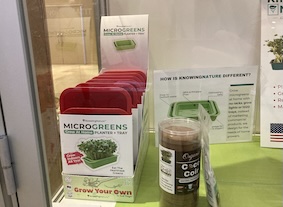Pruning Sage for Spring
Views: 38409

As I speak, 90 yards of loam are being dispersed through the 30-some plots of my community garden. It’s hard work. Good thing we hired someone to do it for us.
My perennial sage, the culinary kind, made it through the mild winter like a real trooper. It should have—it had bulked up the summer before. And its current state of heftiness causes me concern. It overshadowed and outright killed my rosemary. Left unchecked it could give the nearby rampaging rhubarb a scare.
Culinary sage is tough. It’s drought tolerant and thrives in hot sun, like lots of those Mediterranean perennials do. And it grows best in well-draining soils. Given all of this info, no wonder it thrived in my plot.
Pruning sage
Last year’s problem was I had neglected pruning the sage when the time was right. In fact, I didn’t prune it at all. And from each of the winter-dormant branches, the thing flourished with growing shoots. Sage chaos ensued.
This year, it’s getting a trim. Actually, it’s getting a full-on haircut.
Pruning sage is best done in early spring, just as spring growth starts to burst from the branches. This way you can see which branches are dead, and you and trim those out first.
Pruning Oversized sage plants
If your plant is full and oversized, go ahead and remove the entire length of a branch or two. Be smart about it and think about how that cut will impact the future shape of the plant.
Me? I’m going to trim a branch or two from the perimeter. If you seem to have dense branching at the heart of the plant, prune out a few from there to make it a bit more loose. This will help with airflow in the summer. If your sage isn’t oversized or too densely packed with branches, skip to the next step.
The last step is trimming back the remaining branches. Depending on how long the branches are, make cuts anywhere from one to four or five leaf nodes down the branch’s length. Make the cut diagonally just above the leaf node.
Prevent powdery mildew
Before you leave your sage with its neat new trim, tidy up the plant by removing any old and dead leaves on the branches and also from underneath it. It’s just good plant hygiene. This, coupled with its airy inner branching, will help prevent an outbreak of powdery mildew, which tends to be troublesome for culinary sage. You’ll know you have it when a light-colored powdery substance appears on the leaves. But we’ll cross that bridge when we get to it.
Meet Ellen Wells
When you’re raised on a farm, you can’t help but know a thing or two about gardening. Ellen Wells is our expert on edible gardening.…
Ellen's Recent Posts

Microgreens Kitchen Garden Kit






